Select your language
Select your language
This queer glossary by HER is a comprehensive and free collection of articles dedicated to LGBTQIA+ terminology, including lesbian terms and slang.
Designed by queer people for the queer community and allies, the glossary offers in-depth explanations, definitions, historical context, and fascinating insights into terms related to sexual and romantic orientation, identity, and a spectrum of gender expressions.

Aegosexuality is a term used to describe a person who experiences sexual attraction, but they don’t necessarily want to engage in sexual activities with themselves or others in real life. Instead, they might find satisfaction in the idea of fictional or fantasy scenarios involving sex or simply in the concept of sexuality itself, rather than pursuing it in reality. It’s a way some individuals relate to their own sexuality.
Heteroflexible is a term used to describe someone who typically identifies as heterosexual but is open to or occasionally attracted to people of the same gender. It suggests a level of flexibility in one’s sexual orientation, with a primary attraction to the opposite gender but the potential for some attraction to the same gender on occasion.

Ambiamorous is a term used to describe someone who is open to and comfortable with both monogamous and non-monogamous relationships. It means they can be content and fulfilled in either type of romantic or sexual partnership, depending on their preferences and the circumstances. Essentially, it signifies a person’s flexibility and adaptability when it comes to matters of love and commitment.

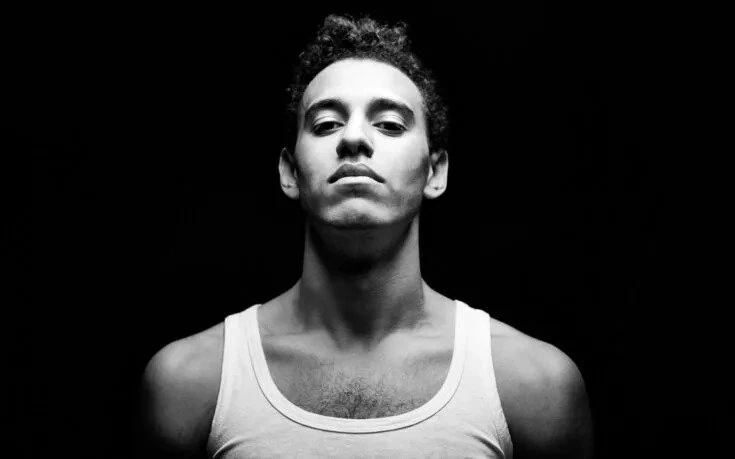
Androsexual is a term used to describe someone who is sexually attracted to people who identify as male or exhibit typically masculine qualities.

Queerness is a beautifully diverse and inclusive term that celebrates the unique experiences and identities within the LGBTQ+ community. It encompasses a wide spectrum of non-normative gender expressions, sexual orientations, and relationships. Queerness is all about embracing and affirming one’s authentic self, regardless of societal expectations or labels. It’s a vibrant and evolving concept that fosters love, acceptance, and unity among people who defy traditional gender and sexual norms. Queerness encourages us to celebrate the rich tapestry of human diversity and to support one another on our journeys of self-discovery and self-expression.

Cupiosexual is a term that describes someone who may not experience sexual attraction but still desires and seeks romantic or emotional connections with people. It’s all about forming deep emotional bonds regardless of gender or sexual orientation.

Pansexuality is a sexual orientation characterized by the potential for attraction to people regardless of their gender identity or gender expression. It’s all about love and connection without being limited by traditional gender boundaries. Pansexual individuals embrace a diverse spectrum of gender identities and are an important part of the LGBTQIA+ community.

Gender envy is a feeling experienced by some individuals in the LGBTQIA+ community or others who don’t identify with their assigned gender at birth. It’s when someone admires or wishes to embody the gender characteristics or presentation of someone of a different gender. This can involve a strong desire to express oneself in a way that aligns with the gender they identify with, often inspired by individuals who embody that gender. It’s a personal and valid part of exploring one’s gender identity and expression within the LGBTQIA+ spectrum.

Gender apathetic is a term within the LGBTQIA+ community that describes individuals who don’t strongly identify with or prioritize traditional gender categories. They may feel indifferent or neutral towards societal expectations related to gender roles and may prefer not to be defined by gender stereotypes. Gender apathetic people often embrace a more fluid and open approach to their own gender identity and expression, focusing on being authentic and true to themselves rather than conforming to rigid gender norms. It’s about embracing diversity and breaking free from the constraints of traditional gender expectations.

Pangender is a term used within the LGBTQIA+ community to describe a person whose gender identity is not limited to one specific gender. Someone who identifies as pangender may feel that they encompass a wide range of genders or that their gender identity is fluid and can change over time. It’s all about embracing the beautiful diversity of gender experiences and expressions.

Omnisexual: Omnisexual is a sexual orientation where a person is attracted to individuals regardless of their gender identity. People who identify as omnisexual can be attracted to people of all genders, including those who identify as male, female, non-binary, genderqueer, and more. It emphasizes a broad and inclusive approach to attraction.
Pansexual: Pansexuality is also a sexual orientation characterized by the potential for attraction to people regardless of their gender. Pansexual individuals may be attracted to people of any gender identity, seeing beyond gender as a defining factor in their attraction. Pansexuality is often described as being attracted to people for who they are as individuals, rather than their gender.
Both omnisexuality and pansexuality emphasize a deep appreciation for diversity in gender identities and celebrate love and attraction without being limited by traditional gender boundaries.

“Neptunic” is a wonderful and inclusive term within the LGBTQIA+ community. It describes an individual who is attracted to both nonbinary and female genders, fostering a deep connection with these identities. Alternatively, it can be seen as an attraction to all individuals except men and those who identify as man-aligned or masculine-aligned nonbinary people. This orientation is especially helpful for nonbinary individuals who want to express their attractions without relying on the traditional gender binary, but it can be embraced by anyone, regardless of their own gender identity. Neptunic can stand alone as a unique sexual orientation, or it can be combined with other orientations to reflect the rich diversity of human attraction.

Autosexual is a term used within the LGBTQIA+ community to describe individuals who experience romantic or sexual attraction exclusively to themselves. It’s about self-love and self-attraction, where someone finds themselves emotionally and sexually fulfilled by their own presence and identity. Autosexuality is a unique and valid expression of self-connection within the LGBTQIA+ spectrum.

Cupioromantic is a term within the LGBTQIA+ community that describes individuals who experience romantic attraction but don’t necessarily have a specific preference for the gender or gender identity of their romantic partners. Instead of being limited by gender, cupioromantic people may be open to romantic connections with individuals of various genders. This term highlights the diversity of romantic orientations within the LGBTQIA+ spectrum.

A nympho, short for “nymphomaniac,” is a term that was historically used to describe someone with a strong and intense sexual desire or appetite. It’s important to note that sexual desire and orientation are diverse and can be part of the LGBTQIA+ spectrum, so understanding and respecting individual identities is crucial. The term “nympho” is considered outdated and can be stigmatizing, so it’s best to use more respectful and inclusive language when discussing someone’s sexuality.

Agender is a term used within the LGBTQIA+ community to describe someone who doesn’t identify with any specific gender. It means that a person feels no connection to being male, female, or any other gender. Instead, they exist outside of these traditional gender categories, embracing their unique identity beyond the binary.

Lesbian sexuality refers to the romantic and sexual attraction between two individuals who identify as women within the LGBTQIA+ community. It involves emotional and physical connections, including love, affection, and intimacy, exclusively between women. This unique and beautiful aspect of human sexuality is an important part of the LGBTQIA+ spectrum.

AFAB, or Assigned Female at Birth, refers to individuals who were initially identified as girls or women when they were born based on their physical characteristics. It’s an important term within the LGBTQIA+ community because it acknowledges that a person’s gender identity may not necessarily align with the sex they were assigned at birth. This recognition helps promote inclusivity and understanding for all gender identities.

A “dyke” is a term often used within the LGBTQIA+ community to describe a person who identifies as a lesbian and is typically a woman who is attracted romantically or sexually to other women. It’s a word that can be reclaimed as a positive and empowering self-identifier.

“Bisexual panic” refers to the anxiety or discomfort some individuals may experience when they encounter or learn about someone who identifies as LGBTQIA+, specifically as bisexual. This reaction can stem from misconceptions, stereotypes, or biases about bisexuality. It’s important to foster understanding and acceptance within the LGBTQIA+ community to create a more inclusive and supportive environment for all.

Demisexual is a term within the LGBTQIA+ community. It describes a person who typically doesn’t experience sexual attraction towards others unless they’ve developed a strong emotional bond or connection with them first. In essence, demisexual individuals require a deep emotional connection before feeling sexual attraction.
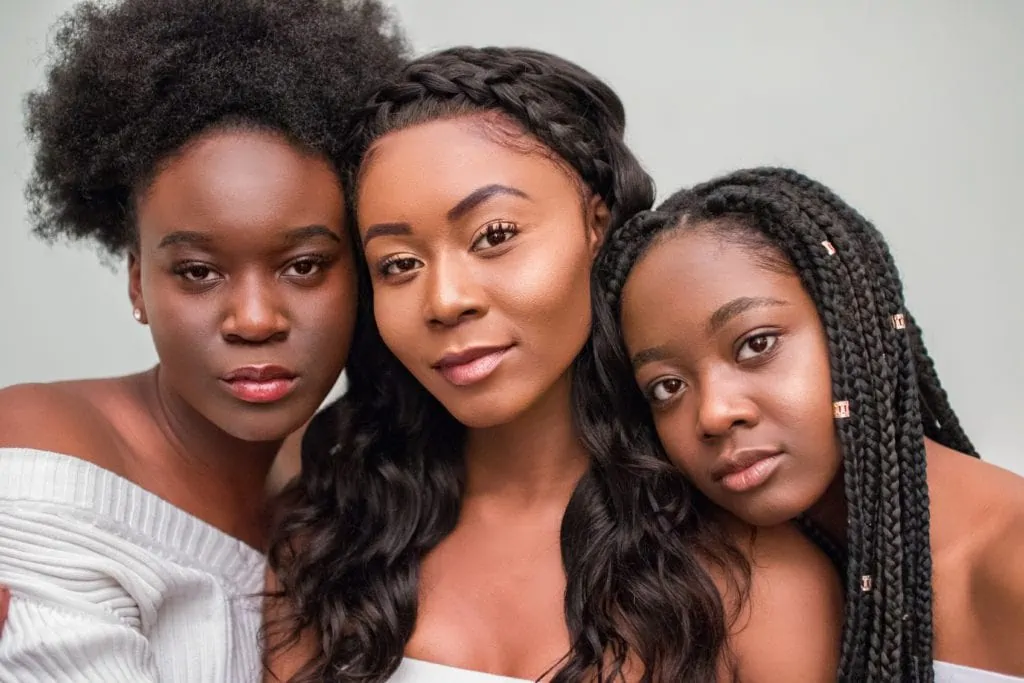
Lesbian slang: A “Stem lesbian,” which stands for “Stud-Femme” lesbian, refers to someone within the LGBTQIA+ community. A Stem lesbian typically embraces a mix of both traditionally masculine (stud) and feminine (femme) qualities or expressions. They may have a diverse gender presentation that doesn’t conform to societal expectations of gender roles, blending aspects of both masculinity and femininity in their appearance and behavior. Stem lesbians are a vibrant part of the LGBTQIA+ spectrum, celebrating diversity and individuality.

A “Pillow Princess” is a term used in LGBTQIA+ culture to describe someone, usually a woman, who prefers to receive sexual pleasure and attention from their partner rather than actively participating in sexual activities themselves. It’s important to note that this term is often used in a playful or humorous way within the LGBTQIA+ community and should be used with respect and consent.

A drag king is a person, often LGBTQIA+, who performs in a way that typically embodies male characteristics, appearance, and identity as an artistic expression. They use costumes, makeup, and stage presence to challenge and explore gender roles and stereotypes while entertaining and celebrating their own unique identities.

Pansexuality is when someone is attracted to individuals regardless of their gender. People who identify as pansexual are open to romantic and sexual connections with people of all gender identities, including transgender, non-binary, and genderqueer individuals.
Bisexuality, on the other hand, refers to being attracted to two or more genders. Bisexual individuals can be attracted to people of their own gender as well as other genders, but it doesn’t necessarily mean they are attracted to all genders.
In essence, pansexuality is a broader spectrum of attraction, while bisexuality typically involves attraction to a mix of genders, but not necessarily all possible genders. Both identities are valid expressions of love and attraction within the LGBTQIA+ community.

Sapphic refers to a term used in the LGBTQIA+ community to describe women who are attracted to other women romantically, sexually, or emotionally. It can also refer to poetry or literature that celebrates the love and desires between women, inspired by the ancient Greek poet Sappho, who wrote about love between women.
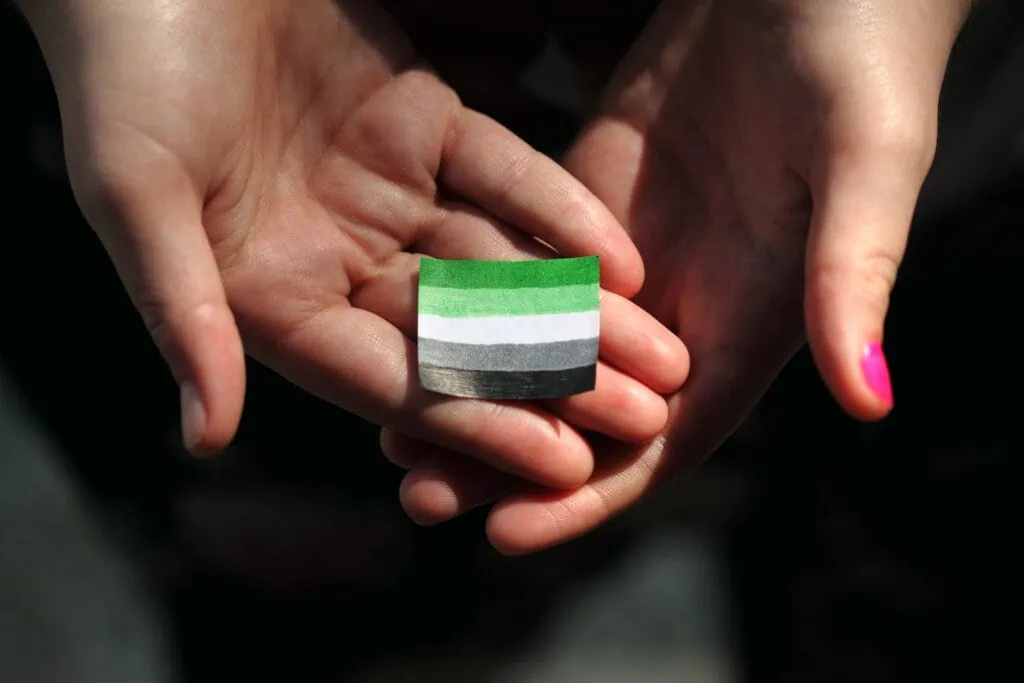
The aromantic spectrum, within the LGBTQIA+ community, refers to a range of romantic orientations where individuals may experience little to no romantic attraction. People on this spectrum may identify as aromantic, meaning they don’t experience romantic attraction, or as various other identities within the spectrum, like demiromantic or greyromantic, which describe nuances in their romantic feelings. It’s all about recognizing and respecting diverse ways of experiencing love and relationships.
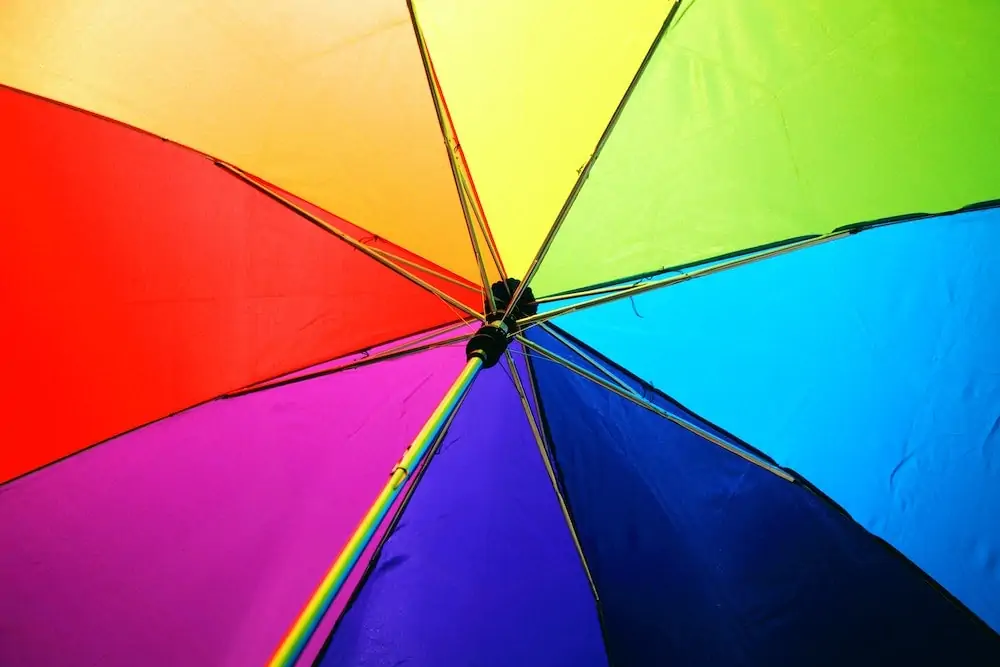
Intersex is when a person is born with biological characteristics that don’t fit typical definitions of male or female. It’s a natural variation in human diversity. Intersex people are an important part of the LGBTQIA+ community, and they deserve love, acceptance, and respect, just like anyone else.
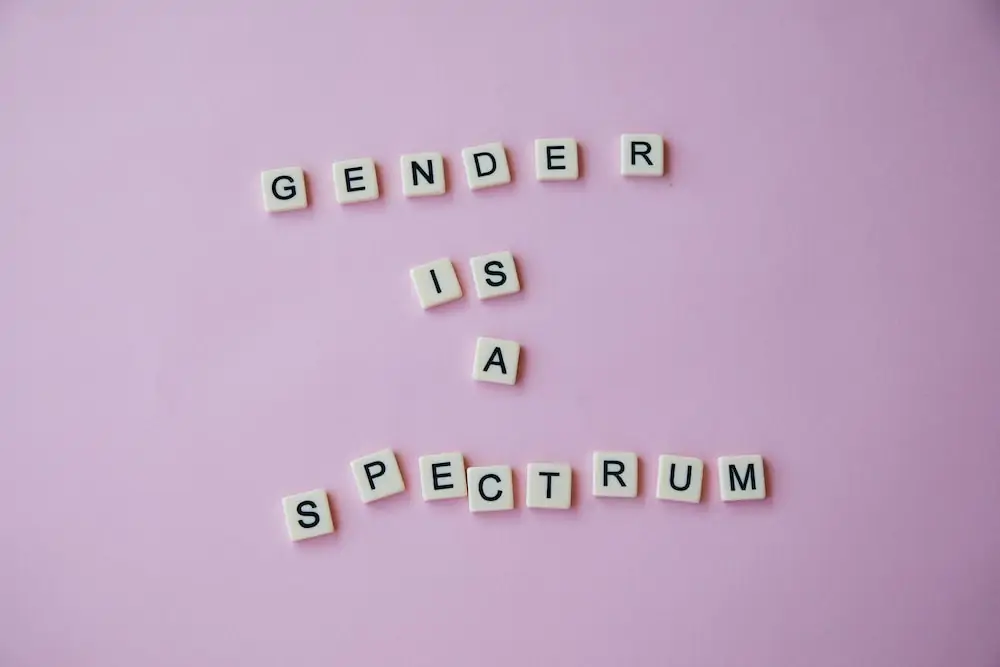
Pronouns are LGBTQIA+-friendly words we use to refer to people in place of their names, embracing diversity and inclusivity. They’re an essential part of showing respect for someone’s gender identity and expression. But what if you’re unsure of someone’s gender identity and which pronouns they use? Applying these rules can help create a more welcoming and inclusive world for everyone where all gender identities are celebrated.

Gender pronouns, in the context of LGBTQIA+ identity, are the words that people use to refer to themselves and others in a way that affirms their gender identity. These pronouns go beyond the traditional binary of “he” and “she” and include terms like “they,” “ze,” “hir,” and others. Using the correct gender pronouns is a way to show respect and support for a person’s gender identity, fostering inclusivity and understanding within the LGBTQIA+ community.
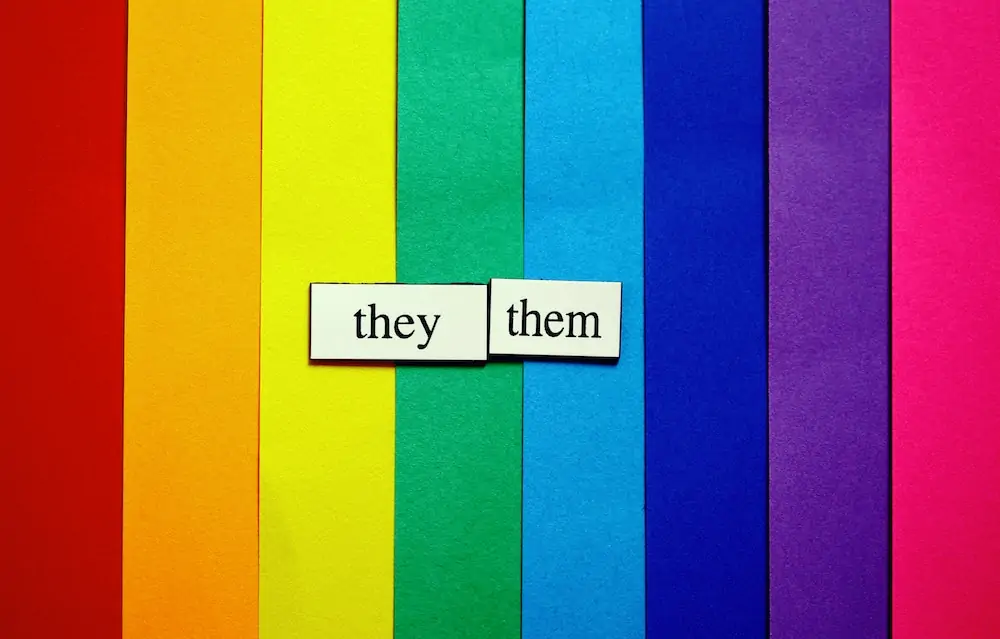
Gender Non-Conforming, in the LGBTQIA+ community, refers to individuals whose gender expression or identity doesn’t align with traditional societal expectations associated with their assigned sex at birth. These individuals may embrace a wide range of gender expressions that challenge or go beyond the binary understanding of male and female. Being gender non-conforming means authentically expressing one’s gender in a way that feels right for them, regardless of society’s norms or expectations. It’s all about embracing diversity and celebrating the unique beauty of each individual’s gender identity and expression within the LGBTQIA+ community.

Two-Spirit is a term used within the LGBTQIA+ community to describe a Native American or Indigenous person who possesses both masculine and feminine qualities, often considered to have a unique spiritual role. Two-Spirit is generally considered a form of non-binary identity because it doesn’t fit within the traditional male/female binary view of gender.

Genderqueer, in the LGBTQIA+ community, is a beautiful expression of gender that doesn’t fit traditional male or female categories. People who identify as genderqueer might feel a mix of both, neither, or something entirely unique. It’s all about embracing and celebrating the wonderful diversity of gender identities.

Lesbian slang: Lesbian Bed Death, sometimes called LGBTQIA+ Bed Death, is a term that’s often used within the LGBTQIA+ community to describe a phenomenon where the frequency of sexual activity tends to decrease in long-term lesbian relationships. It’s important to note that this concept has been criticized for its stereotypes and is not universally accepted. It’s essential to remember that every relationship is unique, and people’s experiences can vary widely.

Androgynous refers to a person’s appearance or identity that blurs traditional gender boundaries, embracing both masculine and feminine qualities. Androgyny isn’t about your gender identity or orientation. It is about outward expression and style. Gay, straight, trans, cis…anyone can be androgynous. It’s all about appearance and what looks somewhere in between masculine and feminine, but doesn’t commit to either.

Non-binary is a term within the LGBTQIA+ community that describes a gender identity that doesn’t fit strictly as male or female. Non-binary individuals may identify as a mix of both genders, neither gender, or as a completely different gender altogether. It’s all about recognizing and respecting the diverse ways people experience and express their gender beyond the traditional binary of male and female.

Genderfluid is a beautiful part of the LGBTQIA+ community. It’s when someone’s gender identity isn’t fixed and can change over time. People who identify as genderfluid might feel more masculine, feminine, or somewhere in between at different moments. It’s all about embracing the wonderful diversity of gender expression.

Bigender is a term within the LGBTQIA+ community that describes a person who identifies and experiences two different genders, either simultaneously or at different times. These individuals may identify as both male and female, or as a combination of any two genders. It’s important to respect and support people in their unique gender identities and expressions.

“Closeted” is a term used in the LGBTQIA+ community to describe someone who has not publicly disclosed their sexual orientation or gender identity. It means that they keep this aspect of themselves hidden or private, often due to fear of discrimination or rejection from others.

QTPOC (Queer and Trans People of Color): This term specifically includes individuals who identify as both queer (LGBTQIA+) and transgender (trans). It highlights the intersection of these identities with racial or ethnic minority backgrounds.
QPOC (Queer People of Color): QPOC, on the other hand, encompasses LGBTQIA+ individuals who are part of racial or ethnic minority groups but does not specifically address their transgender identity. It’s a broader term that includes all queer people of color.
While both terms recognize the experiences of LGBTQIA+ individuals who are also people of color, QTPOC focuses on those who are both queer and transgender, while QPOC includes all queer people of color, regardless of their gender identity.

A Wildfang lesbian is a LGBTQIA+ person who identifies as a lesbian and embraces a style and attitude that challenges traditional gender norms and expectations. They often express themselves in a more androgynous or non-conforming way, rejecting stereotypical feminine appearances and behaviors. Wildfang lesbians celebrate their unique identities and promote LGBTQIA+ visibility and acceptance.

Lesbian term: A “Sporty dykon” is a term used to describe a person who identifies as LGBTQIA+ and embraces a sporty or athletic lifestyle. They are individuals who are proud of their LGBTQIA+ identity while also being passionate about sports and physical fitness. This term highlights the intersection of LGBTQIA+ culture and a love for sports, promoting inclusivity and diversity within athletic communities.

A dykon is a term used to describe someone who’s admired and respected within the LGBTQIA+ community for their style, identity, and advocacy. They’re like LGBTQIA+ icons, celebrated for their positive influence and representation.
A “Diesel Dyke” is a slang term within the LGBTQIA+ community used to describe a lesbian who typically has a more masculine or butch appearance and demeanor. It’s important to note that using such terms should be done with respect and sensitivity, as they can be seen as outdated or offensive by some individuals. Understanding and respecting each person’s preferred self-identity and expression is essential in the LGBTQIA+ community.

Lesbian slang: Lesbian Twitter is a vibrant LGBTQIA+ online space where witty, smart lesbians connect. They share WLW memes, express their desire for partners, and sometimes have exchanges with exes. It’s a community of mainly 19-28-year-olds known for humor and coolness, playfully critiquing straight culture and sharing dreamy scenarios with a loving partner.

A tomboy is a term used to describe a person, often a girl or woman, who defies traditional gender stereotypes by embracing interests, behaviors, or clothing typically associated with the opposite gender. This term is inclusive and can apply to individuals who identify as LGBTQIA+ or heterosexual. It’s important to note that gender expression and sexual orientation are separate aspects of a person’s identity.

A “celesbian” refers to a LGBTQIA+ celebrity who identifies as a lesbian and is known for their advocacy and visibility within the community.

The Sapphic flag is a symbol representing the LGBTQIA+ community, specifically celebrating women who identify as lesbian or sapphic. It consists of three horizontal stripes in the colors violet, pink, and orange from top to bottom. This flag embodies pride and visibility for sapphic individuals within the LGBTQIA+ spectrum.

High femme is a term used within the LGBTQIA+ community to describe someone who expresses their femininity in an intentionally glamorous and often exaggerated way. It’s all about celebrating and embracing a bold, ultra-feminine style and identity. High femmes may wear makeup, dresses, and accessories that are traditionally associated with femininity, but they do so with a unique flair and confidence that reflects their authentic selves.

Lesbian slang: A “femme lesbian” is a LGBTQIA+ person who identifies as a lesbian and expresses their gender identity in a traditionally feminine or femme way. This can involve embracing feminine fashion, mannerisms, and characteristics while being romantically and/or sexually attracted to other women.

Lesbian slang: A “chapstick lesbian” is a colloquial term within the LGBTQIA+ community. It refers to a lesbian who typically has a more understated or natural appearance, often not conforming to traditional feminine stereotypes.

Lesbian slang: A Gold Star Lesbian is a term used in the LGBTQIA+ community to describe a lesbian who has never had sexual or romantic experiences with men. It’s a way for some LGBTQIA+ individuals to express their identity and connection solely to their own gender.

A “soft butch” is a term used to describe someone who identifies as a lesbian or as part of the LGBTQIA+ spectrum and presents themselves in a way that is somewhat masculine, but with a gentle or softer expression of masculinity. It’s a unique and personal way of expressing one’s gender and identity, often involving a mix of traditionally masculine and feminine traits, and it varies from person to person. Soft butches may embrace a range of styles and behaviors that reflect their individuality and comfort with their gender expression.

Lesbian slang: A butch lesbian is a LGBTQIA+ person who identifies as a lesbian and typically expresses their gender in a more masculine or androgynous way. They often embrace a more stereotypically “masculine” appearance and mannerisms while being attracted to and forming romantic relationships with other women. Butch lesbians play an important and diverse role within the LGBTQIA+ community, contributing to its rich tapestry of identities and expressions.
A “lipstick lesbian” is a term within the LGBTQIA+ community to describe a lesbian woman who expresses herself in a traditionally feminine way, often wearing makeup like lipstick and embracing a more stereotypically feminine appearance and style while still identifying as a lesbian. This term highlights the diversity and fluidity within the LGBTQIA+ spectrum.

Top: A “top” is a term often used to describe a person who tends to take on a more dominant or active role in intimate situations within a LGBTQIA+ relationship. It’s not strictly about physical positions, but more about dynamics and preferences.
Bottom: A “bottom” refers to a person who typically takes on a more passive or receptive role in intimate situations within a LGBTQIA+ relationship. Like “top,” it’s not just about physical positions but rather about the dynamics and preferences in the relationship.
Switch: A “switch” is someone in the LGBTQIA+ community who enjoys taking on both dominant (top) and submissive (bottom) roles during intimate moments. They’re versatile and can adapt to different dynamics depending on their mood and desires.
These terms help individuals communicate and understand their preferences and desires within the LGBTQIA+ community, fostering healthier and more fulfilling relationships.

In the LGBTQIA+ community, “T” typically stands for “Transgender.” This beautiful and diverse group includes individuals whose gender identity doesn’t align with the sex they were assigned at birth. Transgender people often embark on a journey to live as their authentic selves, which can involve gender-affirming processes such as hormone therapy or surgery.

LGBT, representing Lesbian, Gay, Bisexual, and Transgender individuals, is a term that was adopted in the late 20th century to unify these communities. In contrast, LGBTQIA+ is an expanded version of the original acronym that emerged as our understanding of sexualities grew more nuanced over time and includes Queer or Questioning (Q), Intersex (I), Asexual or Ally (A), plus (+). The ‘+’ symbol acknowledges the existence of countless other orientations and identities not explicitly named in the acronym itself.